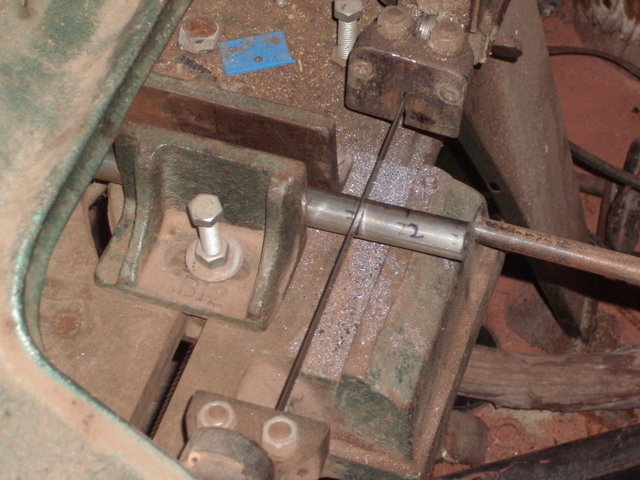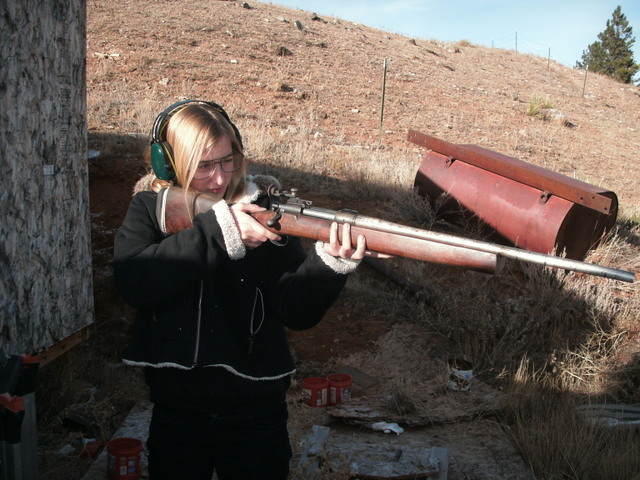Several thoughts come to mind...
Ballistic trajectory
You'll need a box of paper plates, a staple gun, some wooden stands, a hoome-made pistol rest, two types of ammo, felt marker, pens, pencils, notebooks and measuring tools (fine scale ruler, a sliding micrometer, etc.)
The plan is simple. Make a wooden rest for the handgun that can be clamped to the table. Place paper plates in front of the gun every 3 ft out to 25 yards. The first plate should be about 6-12 inches from the muzzle. Fire a round and plot it's path through the paper plates as a measure from the top or bottom of the plate. Use this to chart the path of the bullet. With the gun confined to a fixed rest, they need to explain the apparent rise in trajectory between the muzzle and the bullseye point (usually 25 yards). A 158gr LSWC compared to a 125gr LSWC shows the ballistic differences in flight between different weights of bullets. (A chronograph would be helpful but you can use the published ballistics). Digital photos of the test configuration and test firings add eye-catching interest.
Humanity of JHP/JSP ammo vs. FMJ
Arrange with a local grocer to obtain "expired" pieces of meat of the same kind at a major savings. Pork butt shoulder, Hams, tri-tip roasts, whatever. You'll need a notebook, digital camera, handgun, a few types of ammo - Some FMJ and quality JHP of the same weights and similar velocities. Also a sharp knife, a ruler or measuring device, felt marker, ziploc bags, a "soft" backstop and perhaps a white rod for a pointer.
At a given distance fire a FMJ round into the target product, using a soft backstop to catch any "through and through" bullets. 12"-14" of dry phone books backed with a 1/2 wood panel should work. Take photos of entrance & exit holes using the pointer if necessary. Recover the bullet, tag & bag it. Use the sharp knife to reveal the bullet's path and photograph. Repeat for the JHP round. Detail the differences and the consequences. Display the spent bullets with photos of physical damage.
(i.e. the FMJ causes little damage, results in longer period of pain, suffering and death from infection or slow blood loss. May require multiple hits to incapacitate which complicates surgical intervention and lowers survival chances. The JHP produces a larger wound more likely to incapacitate quickly with only one shot. Medical intervention is focused on one path of injury increasing survival chances.)
Do you have an old "beater" pistol or revolver?
The Fallacy of Micro-stamping
Using an old gun, use a fine-tip engraver to etch a series of small dots on the breechface around the firing pin hole, within the diameter of the cartridge case. Fire several rounds, including some +P rounds (if safe in that gun) and save the cases. Then use a small jeweler's file and/or sandpaper on a stick to smooth away the indentations. Repeat the firing and retain the cases. Compare. Indicate the amount of time it took to file down the dots and surrounding area to prevent imprinting on the cartridge cases. For extra fun, time the removal and replacement of the firing pin in the slide to show how quickly it can be replaced. Repeat for extractors and ejectors if desired.



